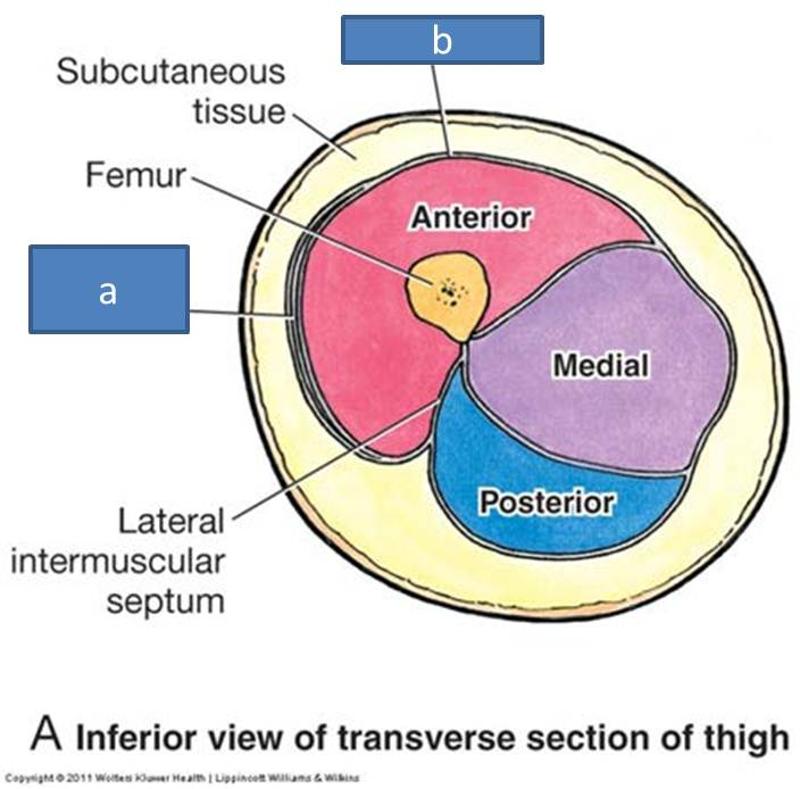

In a partial knee replacement, the surgeon removes a part of the damaged knee joint.
#COMPARTMENTS OF THE KNEE FULL#
They are referred to as partial and full knee replacement. There are two types of knee replacement surgeries. What are the types of knee replacement surgery? The patient will need to be active and follow instructions for at least 3 months after the surgery. The long-term outlook for the recovery of a grade 4 chondromalacia knee replacement is the same as any other knee replacement surgery. What is the long-term outlook for a grade 4 chondromalacia knee replacement surgery? There are no specific risks that are more likely to occur in a patient with a grade 4 chondromalacia knee replacement. The risks of a grade 4 chondromalacia knee replacement are the same as for any other type of knee replacement surgery. What are the risks of a grade 4 chondromalacia knee replacement? The recovery time for a grade 4 chondromalacia knee replacement is the same as any other type of knee replacement surgery. How long does a grade 4 chondromalacia knee replacement take? The patient will have physical therapy to help restore the knee to its normal function. The recovery from a grade 4 chondromalacia knee replacement is the same as any other knee replacement surgery. What does the recovery of a grade 4 chondromalacia knee replacement look like? The risk of complications is the same for both the partial knee replacement and the full knee replacement. There are no specific complications that are more likely to occur in a patient with a grade 4 chondromalacia knee replacement. What are the possible complications of a grade 4 chondromalacia knee replacement? The patient can resume normal activities after the surgery. What are the benefits of a grade 4 chondromalacia knee replacement?Ī grade 4 chondromalacia knee replacement is a type of knee replacement. The type of knee replacement surgery is the same for both a grade 4 chondromalacia knee replacement and a full knee replacement. What type of knee replacement is a grade 4 chondromalacia knee replacement? They will also replace the damaged knee joint with a metal or plastic prosthesis. They will then remove the damaged cartilage and the damaged bone ends. The surgeon makes an incision in the knee joint. How is a grade 4 chondromalacia knee replacement performed? The symptoms of a grade 4 chondromalacia knee replacement are the same as other knee replacement surgery. What are the symptoms of a grade 4 chondromalacia knee replacement?

One is the partial knee replacement and the other is the full knee replacement. There are two types of knee replacement procedures. The surgeon will also replace the damaged knee joint with a metal or plastic prosthesis.Īfter the surgery, the patient will be given physical therapy to help restore the knee to its normal function. In this procedure, the surgeon will remove the damaged cartilage and the damaged bone ends. Knee replacement surgery is a surgical procedure to replace the damaged knee joint with a new one. What is a grade 4 chondromalacia knee replacement? The surgeon will make an incision in the knee joint and remove the damaged cartilage.

This is the same in a meniscus replacement as well. In a grade 4 chondromalacia knee replacement, the surgeon removes the damaged cartilage. This is like a rubber ball and a wooden ball bumping together. The bones and the cartilage will rub together. When the knee is damaged, it is no longer able to keep the bones in place. The damaged cartilage is the part of the knee that keeps the bones in the knee in place. In this type of knee replacement, the damaged cartilage is removed. In this article, we will discuss what a grade 4 chondromalacia knee replacement is, the different types of knee replacement, the surgical procedure, the recovery, and the possible complications.Ī grade 4 chondromalacia knee replacement is a type of knee replacement surgery.


 0 kommentar(er)
0 kommentar(er)
